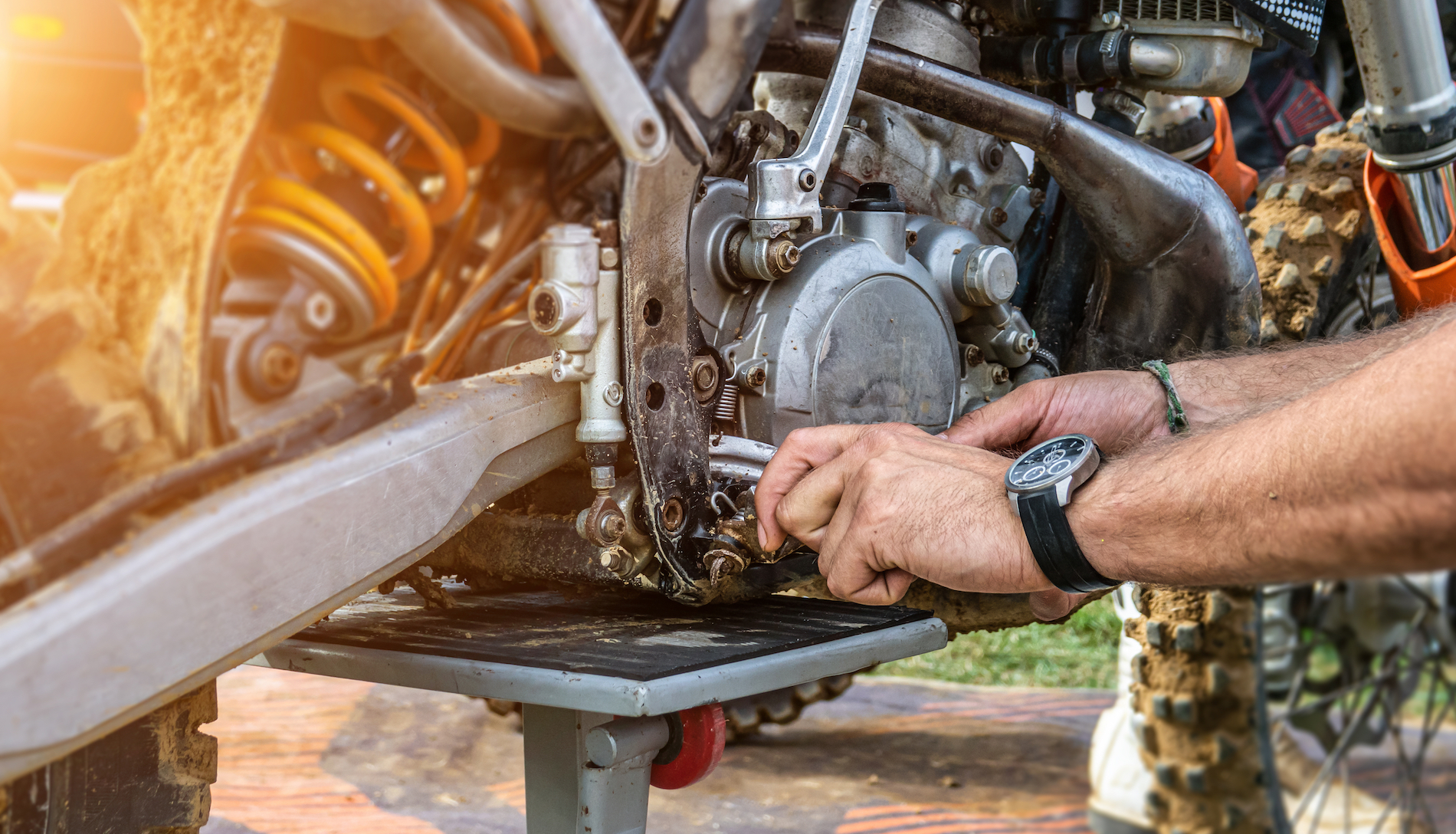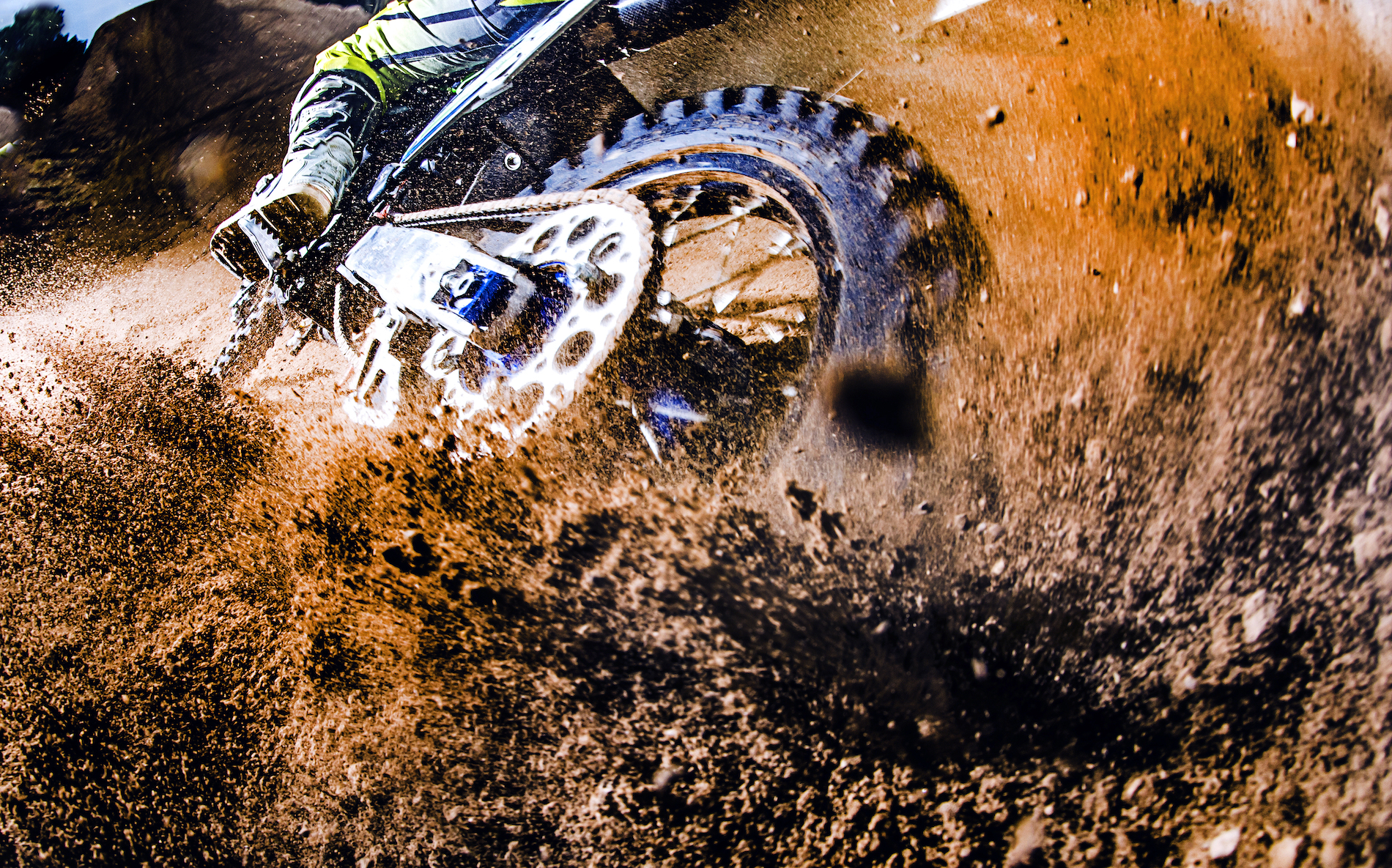Dirt Bike Maintenance 101
Posted by ZM Performance on Jun 15th 2022

Riding a dirt bike has many surprising health benefits— from enhanced endurance to better posture— but skimp out on your routine dirt bike maintenance and you’ll only end up with chronic headaches.
There’s nothing worse than being stuck on the side of the trail trying to figure out why your dirt bike won’t start! Take the time to read up on routine dirt bike maintenance and familiarize yourself with some common repairs, and you’ll get much more enjoyment out of your dirt bike in the long run!
The Importance of Regular Dirt Bike Maintenance
Regular dirt bike maintenance is essential to your safety, the performance of your bike, and the longevity of your investment. Routine maintenance will help you identify problems early on and prevent more complex and costly problems from developing down the road. This will save you money and help you avoid inconveniences in the long run.
Some routine maintenance should be completed before each ride to ensure your safety and maximize your performance. Most experts recommend that more extensive dirt bike maintenance and service be conducted every 100 hours of use or so, depending on how rugged the conditions are.
10 Important Dirt Bike Maintenance Tips
Keep in mind, that this is not an exhaustive list of dirt bike parts that you should inspect and maintain regularly. Your dirt bike owner’s manual will include a much longer, more detailed checklist that you should familiarize yourself with. But these are a few of the most important maintenance items to memorize:
- Lubricate your dirt bike chain and check your chain tension before every ride. To check the chain tension, rotate the wheel a few times to find the tightest point and then measure the distance between the top of the chain slider and the bottom of the chain to check the slack. Refer to your owner's manual for recommended drive train slack, as it can vary.
- Inspect your wheels and rims and check tire pressure with an accurate gauge (one specifically made for dirt bike tires) before every ride! The ideal tire pressure for most dirt bikes is 12 psi, though most can still run between 8 psi and 16 psi. You can also choose to customize your tire pressure for different terrains and styles of riding.
- Check your dirt bike air filter and either clean or change it between every ride. Many riders choose to carry several air filters so they can swap out the used filter after each ride.
- Clean your dirt bike after every ride– and visually inspect all the bike parts while you’re at it. Keep an eye out for any loose parts– especially nuts, bolts, chains, and connectors.
- Check engine oil (both oil level and cleanliness) and either change or refill between every other ride. Refer to your owner's manual for specific recommendations on when to replace your engine oil and oil filter, as it depends on the make and model of your dirt bike.
- Check your brake pads regularly and be on the lookout for problems when you hit the brakes, such as stickiness or a gritty, scraping sound. Generally, brake pads need to be changed at least every 20,000 miles. It’s recommended that you change them if the thickness of the pad is less than 1-2 millimeters or 1/8 of an inch.
- Check your coolant level before starting your bike (unless you have an air-cooled engine). Take off the radiator cap and make sure the coolant level is at or near the top.
- Test your spark plugs to make sure you’re getting a spark, then check the color of the spark plug. The tip of your spark plug should be tan or light brown, not black or wet.
- Keep your gas fresh. Gas degrades over time and will eventually go bad. Old gas negatively affects performance and can clog up the fuel lines and cause problems with the carburetor and throttle body.
- Make sure you have some basic tools on hand. Some of the most common tools you’ll need for maintenance and basic repairs include spoke wrenches, t-handles, tire irons, tire gauges, tire inflation, plug wrenches, stem nut and axle nut wrenches, chain tools, wire pliers, and torque wrenches.
Keeping Track of Your Dirt Bike Service Records
Here’s a bonus tip: Use a maintenance log! A dirt bike maintenance log will help you keep track of maintenance, service, and repairs completed over the years. It might seem like an unnecessary hassle, but there are simple, low-effort logbooks out there– and it will help you stay on top of maintenance and repairs to prevent larger and more expensive problems from developing. Every entry should include the date, mileage, and all the important details. This is because some maintenance recommendations are after X,XXX miles, while others are after XX years.

5 Common Dirt Bike Repair Issues
No matter how well you stay on top of your dirt bike maintenance, there are some dirt bike parts that will inevitably show signs of wear and tear over time. Knowing about the most common repairs and part failures in advance will help you troubleshoot in the moment. Here are some common dirt bike repair issues to keep in mind:
- Chain replacement. Too tight of a chain can cause it to break, and too loose of a chain can cause it to slip off a sproket or damage the sproket over time. If you start to notice an asymmetrical wear pattern in between the teeth, there’s likely a problem with your drive chain's rotational force and it’s time to make some replacements.
- Brake pad replacement. Over time, your brake pads material will wear down all the way to the backing plate. Some brake pads have indicator marks that show when they need to be replaced. If yours does not, it’s a good idea to keep a micrometer on hand to measure them.
- Tire replacement or repair. Did you know your rear tire and wheel will wear out about three times faster than your front one? If you need to repair your dirt bike inner tube, there are plenty of patch kits available to help. It’s a good idea to carry a kit in case of an unexpected tire problem mid-ride!
- Battery replacement (for electric start dirt bikes). If you take good care of your battery, it should last around three years. Luckily, replacing your dirt bike battery is a pretty simple process that most riders can handle on their own.
- Engine problems or an engine that won’t start. There are many different dirt bike engine parts that work together to make your bike start seamlessly and run smoothly, so it’s important to know how to do some basic troubleshooting. First, check the air filter to see if it needs replacement, as this is a quick and easy fix. Next, check the fuel level and quality as well as the fuel lines. Next, check the spark to ensure it’s working properly. If everything is looking good, but the engine still won’t start, you might have a problem with the engine itself. In this case, you probably want a dirt bike mechanic to take a closer look and diagnose the issue.
The Importance of High-Quality Dirt Bike Parts
When shopping for dirt bike parts, you can find OEM (original equipment manufacturer) parts, aftermarket parts, or used parts. OEM parts are generally more expensive but tend to be a safe bet in terms of reliability, as you simply replace the stock part with a new, fully-functioning part. In some cases though, aftermarket parts can upgrade and improve the performance of your dirt bike. For example, many aftermarket exhaust systems are lighter and offer more horsepower, so many riders upgrade this part right from the get-go. On the other hand, if you’re replacing complex engine parts, it’s usually best to go the OEM route. Whatever kind of part you decide to go with, just make sure that it’s a high-quality part. We all love a deal, but suspiciously cheap parts will just have to be replaced more frequently and can present safety hazards.
Dirt Bike Maintenance with ZMPerformance
ZMPerformance sells all the spare dirt bike parts and repair kits you need to cross everything off of your maintenance checklist so that you can get outside and ride!
